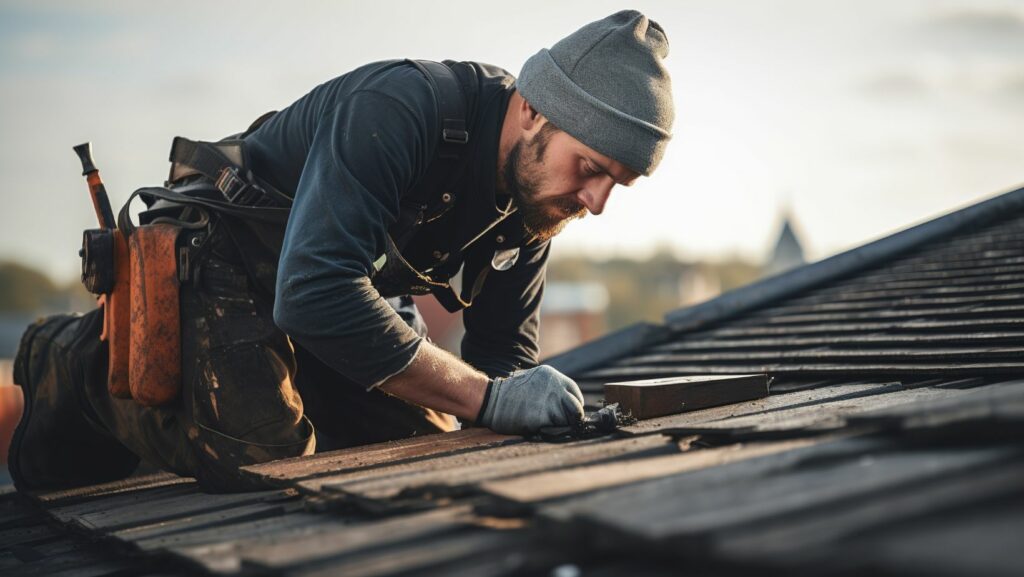Imagine sitting in your perfect outdoor oasis on a sunny day. What catches your eye first as you enjoy the perfect seating? Is it the bold architecture, the landscaping, or the fashionable lines of the roof that encircle the whole structure? A good-looking roof is more than just a practical requirement; it’s the feature that gives your house character and great curb appeal.
Roof pitch is an essential factor in new home construction and any remodeling project. The slope of the roof—the pitch—determines everything from aesthetics and energy efficiency to weather resistance and space within the room. Roofing design incorporates the pitch to ensure a balanced and effective structure.
There are many factors you need to consider to get the roof pitch right, making it a bit overwhelming. But worry not! This article will provide a few pointers to help you determine the right roof pitch for your home!
Local Climate
One of the most crucial factors to consider when determining your roof pitch is the climate in your local area. Different pitches are best suited for specific weather conditions.
A steep roof pitch can be your best choice if you live in a region that has heavy snow accumulation. This is because it allows snow to slide downwards, preventing build-up that could lead to structural damage. For instance, roofs in northern climates have a roof pitch measuring about 9:12 or steeper. This equates to a roof slope with a total rise of 9 inches for every 12 inches of its horizontal run.
Meanwhile, if you reside in areas with a high level of rainfall, you have to pitch the roof moderately enough to drain fast so as to minimize possibilities for leaks. Usually, this will be 4:12 to 6:12. In a hurricane-prone area, a slightly lower pitch can reduce wind lift under the roof structure. This will help enhance the home’s ability to withstand high winds.
Aesthetics And Architectural Style
The roof pitch enhances the aesthetic appeal of your home. It blends with the architectural style to create a cohesive look. Different architectural styles favor specific roof pitches that accentuate their unique characteristics.

For example, colonial homes have steeper roof pitches, unlike modern houses that have lower, much cleaner lines that reflect minimalist, modern aesthetics. The right pitch is essential to ensure you maintain the essence of the architectural integrity and visual appeal of your home.
Roofing Materials
The roofing materials you choose for your home also influence your roof pitch choice. For example, traditional shingles, slate, or clay tiles need a minimum slope roof to perform effectively and prevent water damage.
Manufacturers will indicate minimum roof slope recommendations for every material. For instance, asphalt shingles need at least a pitch of 2:12, while slate may need steeper slope roofs. So, always check the manufacturers’ guidelines when planning your roof installation to ensure compatibility with the selected materials.
Cost And Practicality Of The Roofing Material
The cost of new roof installation differs depending on the pitch. While the steeper roofs may be appealing to the eye and serve effectively in harsh weather conditions, they call for more materials and labor. They also require enhanced structural support—stronger framing or complex roof truss systems.
On the flip side, low pitch roofs are more economical due to the simple roof construction and reduced material use. However, they may compromise on drainage and limit attic space. This can cause problems in wet climates and restrict future expansion.
Choosing the perfect roof pitch involves balancing your budget against long-term advantages and limitations. When setting out your budget, remember to consider the financial outlay and future functionality of the roof pitch. This will ensure your pitch aligns with your financial constraints and meets your home’s aesthetic and practical demands.
Future Modifications And Uses
When selecting a roof pitch, it’s advisable to think of future changes with respect to how you’ll use the attic space. A 9:12 roof pitch can enhance the usability of the attic. This provides enough headroom to transform this often-underutilized area into valuable living space, such as a bedroom, office, or recreational room.
The steeper pitches maximize your house’s existing footprint and increase its resale value to a great degree.

Opting for a steep pitch, thus, meets your immediate architectural needs and opens up opportunities for functional expansion in the future.
Building Codes And Regulations
Local building codes and regulations can also play a crucial role in determining a suitable roof pitch for your home. Local authorities, including the Kansas City roofing contractor, have established such standards to ensure that the roof design meets the aesthetics and safety quality required by the community, depending on local environmental conditions. These regulations may vary from one region to another, taking into account factors like snow load, wind resistance, and architectural style prevalent in the area.
Consider consulting your repair contractor and local building authorities before finalizing the roof design. This will ensure that the roof pitch you propose will meet the regulations provided and relevant approvals, where necessary. Adhering to these guidelines keeps your roof construction legal and optimizes the roof’s performance and safety.
Conclusion
Choosing the right roof pitch for your home is a vital decision that affects its aesthetic appeal and functionality. The above-mentioned factors play a pivotal role in finding the perfect roof pitch at your home. It’s important to account for how each of these elements determines the capacity of the roof to withstand environmental conditions, complement the house design, and be in line with your local building-level rules. And don’t forget to plan for potential future uses to enhance your home’s value and utility. Remember, balancing these considerations with cost and practicality helps you ensure that the effectiveness and aesthetic appeal of the roof meets your long-term needs and preferences.


More Stories
What Are The Different Types Of Lawn Sweepers And Which One Is Right For You
How Home Improvements Can Boost Comfort, Efficiency & Resale Value
A Beginner’s Guide to Growing Houseplants